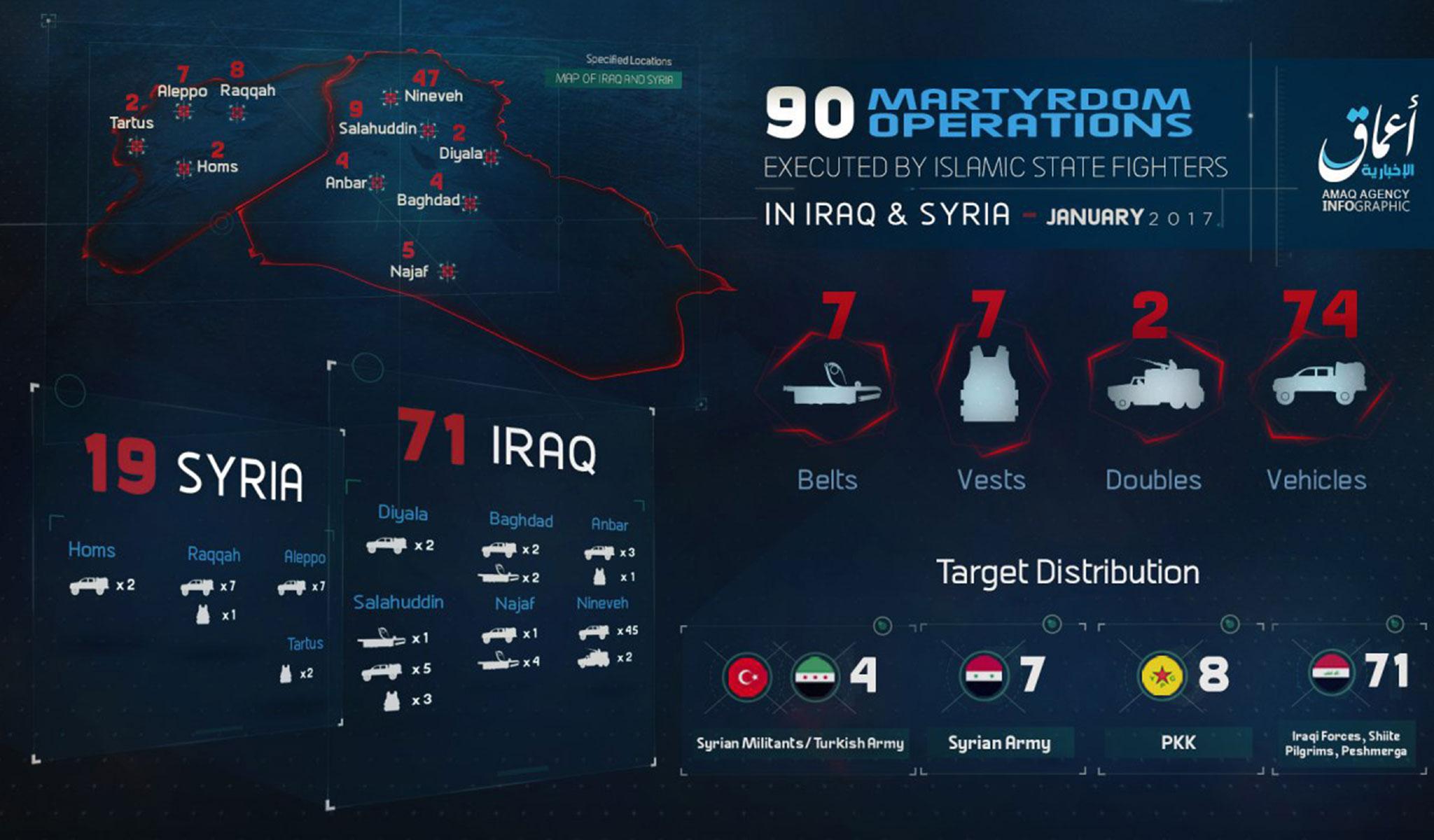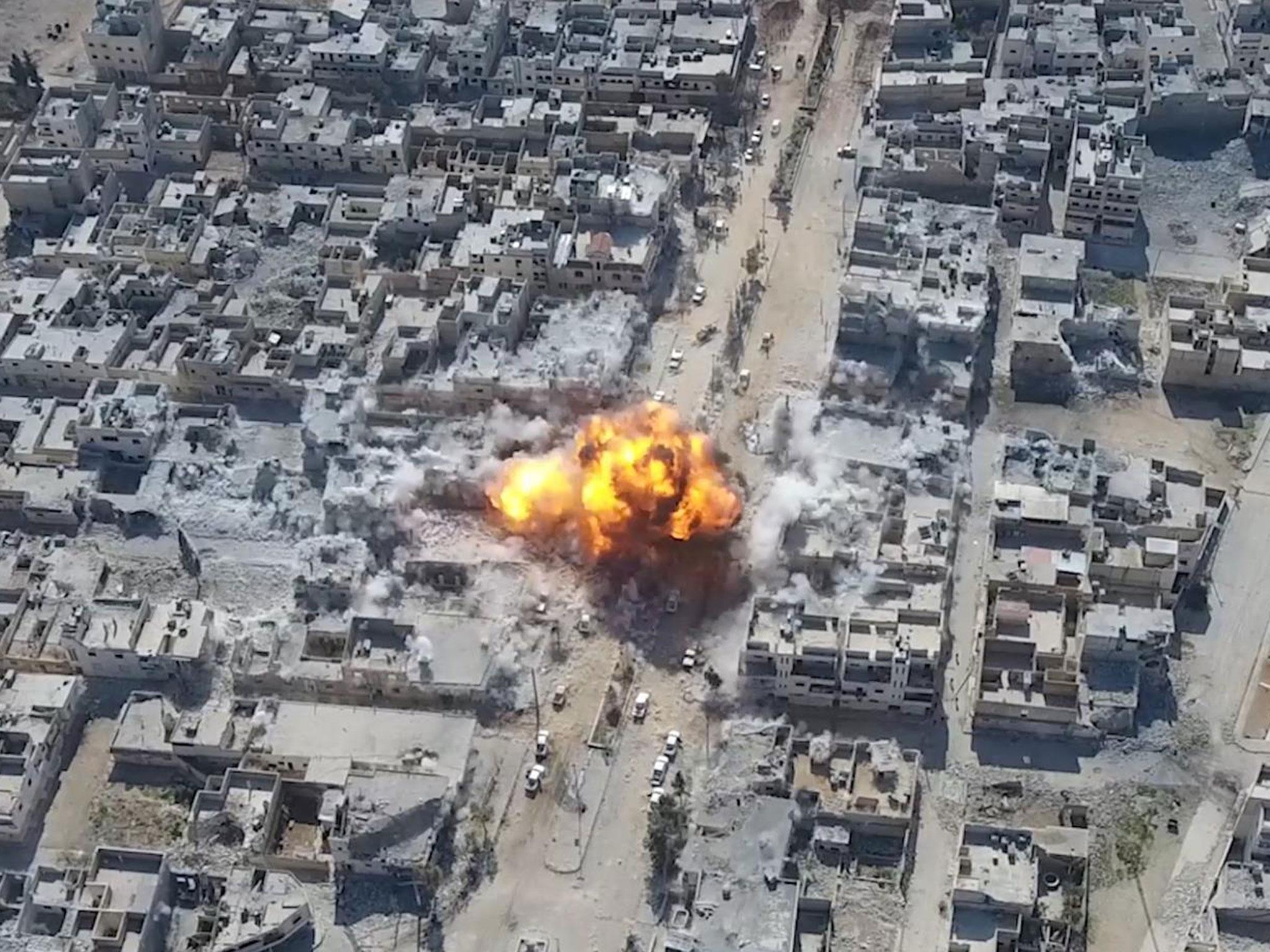Isis carrying out more suicide bombings than ever before as it fights to defend strongholds in Iraq and Syria
More than 80 per cent of more than 900 suicide bombings last year hit military targets
Your support helps us to tell the story
From reproductive rights to climate change to Big Tech, The Independent is on the ground when the story is developing. Whether it's investigating the financials of Elon Musk's pro-Trump PAC or producing our latest documentary, 'The A Word', which shines a light on the American women fighting for reproductive rights, we know how important it is to parse out the facts from the messaging.
At such a critical moment in US history, we need reporters on the ground. Your donation allows us to keep sending journalists to speak to both sides of the story.
The Independent is trusted by Americans across the entire political spectrum. And unlike many other quality news outlets, we choose not to lock Americans out of our reporting and analysis with paywalls. We believe quality journalism should be available to everyone, paid for by those who can afford it.
Your support makes all the difference.Isis is carrying out more suicide bombings than ever before as “utterly brainwashed” militants fight to defend symbolic strongholds in Iraq and Syria, a report has found.
Research by the Hague’s International Centre for Counter-Terrorism (ICCT) found the group is mainly using the “martyrdom operations” as a military tactic rather than in foreign attacks targeting civilians.
A British militant, Jamal al-Harith, is among the jihadis to be sent to their deaths as Iraqi forces continue their advance into Mosul, where vehicles packed with explosives are being sent into enemy lines on a daily basis.
A count released through Isis propaganda channels said 90 suicide bombings were carried out in January alone, mainly in areas of Iraq where the group is under attack.
Charlie Winter, an associate fellow at the ICCT and the author of the report, said that while al-Qaeda’s suicide attacks were mainly carried out by foreigners on civilians, Isis mainly sends local operatives against military forces.

“This reflects a new phase of operationalisation for suicide warfare; a tactical shift with strategic implications that will change the insurgent and terrorist landscape for years to come,” he said.
“The suicide attack, that most shocking tactic of terrorists and insurgents, has never been more commonplace than it is today.”
Mr Winter, who is also a senior research fellow at King’s College London’s International Centre for the Study of Radicalisation and Political Violence (ICSR), compared the phenomenon to Japan’s use of “militarised suicide” in the form of kamikaze pilots in the Second World War.
He found at least 923 suicide operations were carried out by Isis in the 12 months from December 2015 to November last year and predicted that record number would continue to increase.
Around 84 per cent were military operations, while 16 per cent targeted civilians. The vast majority used vehicles packed with explosives – sometimes with the addition of a gunner – and others used fighters wearing vests or carrying guns and belts to detonate during combat.
Isis mainly uses 4x4 vehicles for its bombings, with photos from Mosul suggesting the vehicles are being specifically modified in factories with armour plates and toughened windscreens to prevent drivers being shot before reaching their destinations.
Around a fifth of the bombers pictured in Isis propaganda, including numerous child soldiers, were foreign fighters from outside Iraq and Syria, mainly from Tajikistan, followed by Saudi Arabia, Morocco, Tunisia, and Russia.
Isis has long used suicide bombings as a military tactic to kill and intimidate enemy fighters, but the number of such attacks has rocketed as it continues to lose swatchs of territory in Iraq and Syria, rising from 61 operations in December 2015 to a record 132 in November.
Lina Khatib, head of the Middle East and North Africa Programme at Chatham House, said the trend was a sign of “military weakness”.
“Suicide bombers are individuals who can be deployed using the minimum available explosives, whereas anything larger scale would require more sophisticated weaponry,” she told The Independent. “The fact they are increasingly relying on suicide bombers means they do not have the kind of military capacity they used to have to enable them to use heavy weapons.”
Isis’s once ready supply of weaponry and ammunition seized from overrun Iraqi and Syrian government forces and opposition fighters is drying up, as its supply lines are closed off by tightening border controls and enemy advances, she said.

Weapons factories and development workshops uncovered in Iraq have exposed a bureaucratic manufacturing process for “military grade” weapons and customised drones, but the homemade products have been unable to fill the gap.
Dr Khatib said Isis’s use of suicide bombers was initially offensive, with the group deploying them in a similar way to how a conventional army would use artillery in ground assaults on a military target, but the tactic has now become a last line of defence.
“Isis is now having to be more pragmatic than ever and deploys whoever it finds available” she added, saying that although the group’s options are “more limited than ever”, suicide bombings were still an effective weapon.
“It has managed to intimidate their targets,” Dr Khatib said. “Isis continues to use them knowing that targets are unlikely to use the same tactic.”
Isis champions the gory manoeuvres on its propaganda channels, releasing “breaking” claims by text, followed by more detailed summaries, reports from provincial outlets and magazine articles, as well as photos and sometimes videos of the fighters involved.
Mr Winter said that although the bombings occur most frequently where Isis is under military pressure, they are used tactically and the group does not waste fighters on cities like Fallujah that it considers a lost cause.
“It is apparent from the scale of Isis’s suicide industry that there exists a dedicated infrastructure for manufacturing would-be martyrs and it is only increasing in efficiency,” he warned.
“Isis’s suicide tacticians have perfected their art, not only developing explosives that are more powerful and reliable than ever, but creating what appears to be a sustainable stream of utterly brainwashed would-be suicide fighters.”
Subscribe to Independent Premium to bookmark this article
Want to bookmark your favourite articles and stories to read or reference later? Start your Independent Premium subscription today.

Join our commenting forum
Join thought-provoking conversations, follow other Independent readers and see their replies
Comments